Excerpts from Jim Conrad's
Naturalist Newsletter
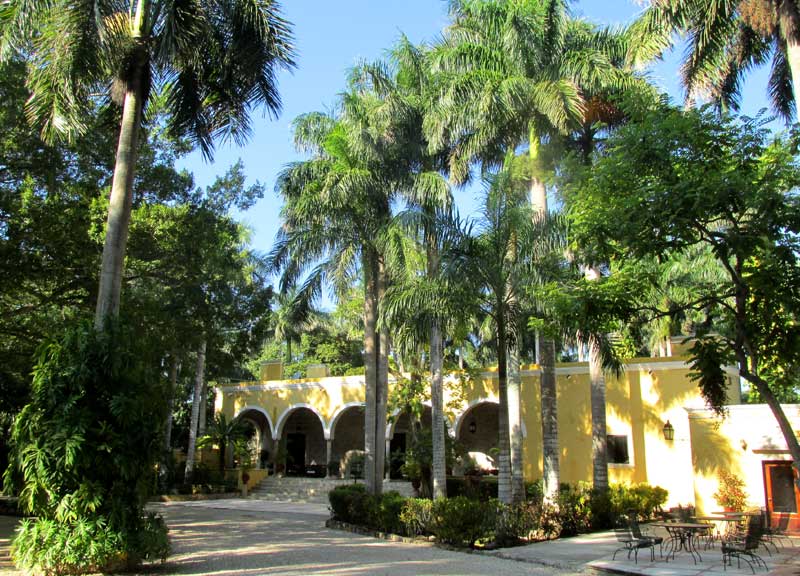
from the October 18, 2015 Newsletter issued from Hacienda Chichen Resort beside Chichén Itzá Ruins, central Yucatán, MÉXICO
A WALK AROUND HACIENDA CHICHEN
On the busy highway connecting Mérida with Cancún, just east of the main entrance to Chichén Itzá ruins, you take a little road on the south side and pass through about a kilometer of low forest. At the end of the road -- just before reaching the wall surrounding the ruins -- turn left into Hacienda Chichen. Immediately, tall palms with glossy, viny aroids climbing their trunks create a cool, shadowy, peaceful alley, at the end of which you encounter the Hacienda's main building, the Casco, shown above.
The Casco dates from the 16th century. Climb its steps, turn around and look toward the road you just came down, and you see what's shown below:
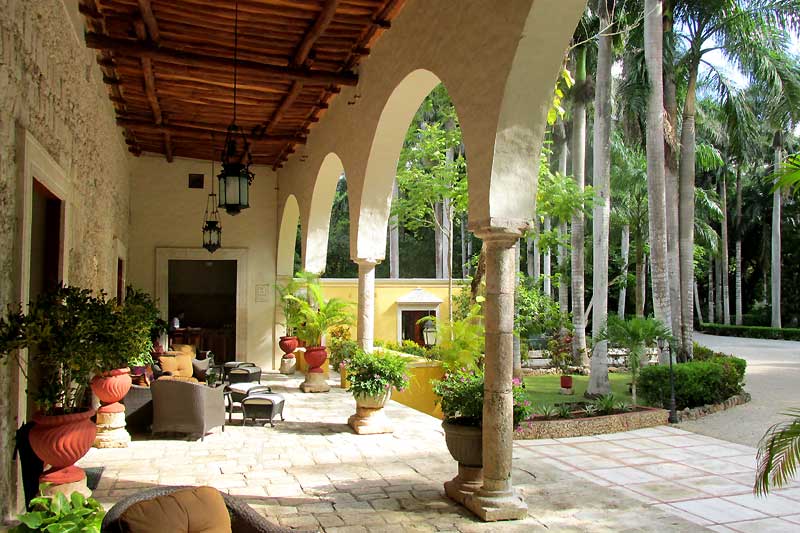
From that same vantage point, twist just a little to the right and you see the big Chinese Banyan shown below:

Back in the 60s when I first visited Chichén Itzá ruins as a backpacking student, I recall the land immediately around the ruins as weedy, scrubby ranchland, and old timers today remember when the stone arch behind the banyan was an entrance to a cattle lot.
Inside the main building, once folks at the reception desk have taken care of you, you might want to eat something at a table on the back veranda. From there a nice view opens into lush vegetation, with Melodious Blackbirds and parrots often calling. Below, you can see the view over one of my recent meals:
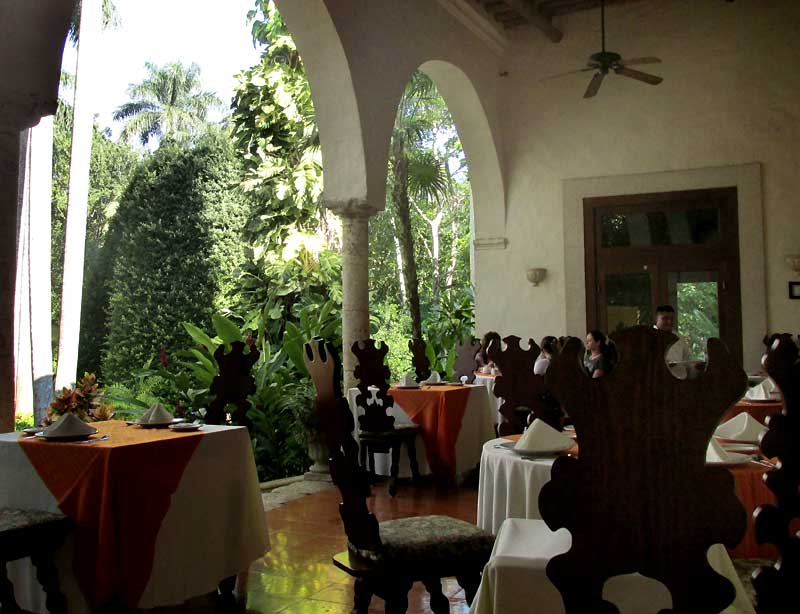
The guest bungalows are scattered through a park-like garden, a typical view shown below:
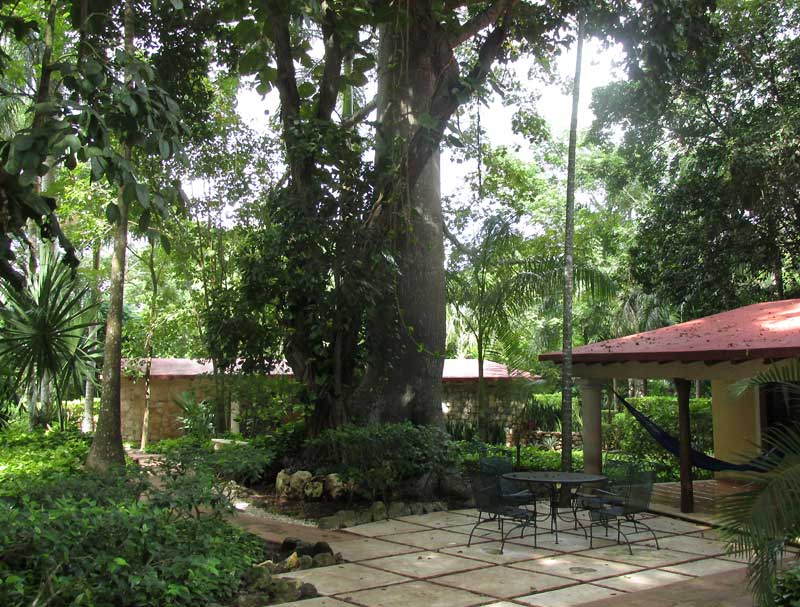
A couple minutes of walking takes you to the 16th century church shown below:
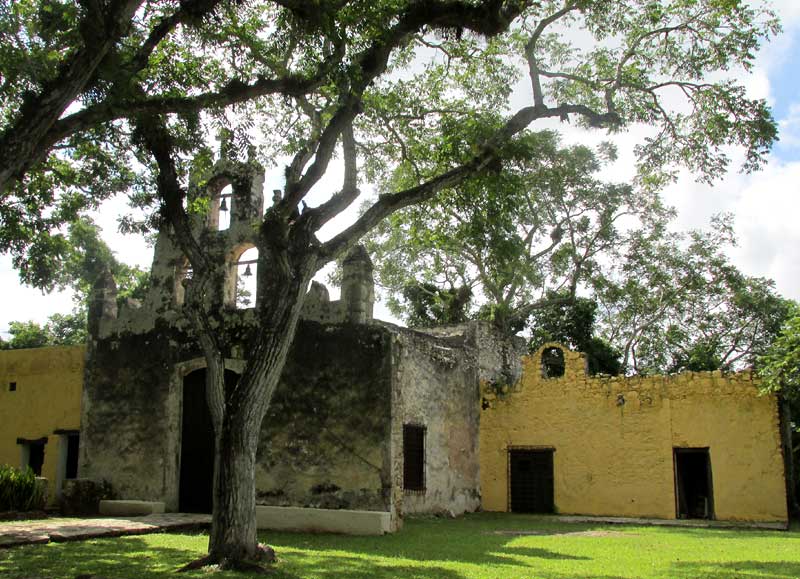
The church stands atop a mound surely built by the ancient Maya, and the church itself is constructed of recycled stones from Maya ruins -- standard church-building procedure back in the 16th century. When I first arrived to stay at Hacienda Chichen in 2009, I lived in the Church's yellow-painted attached section on the right. The main church is well maintained and occasionally hosts weddings, both for local folks and visitors. Below you can see what it looks like on the inside:

I lived in the church's attached area only a few weeks before the hacienda's owners built a Maya style, thatch-roofed hut in the woods about a minute's walk from the main building, in which I lived until 2012, serving as both "naturalist in residence" and living curiosity/exhibition. Right now for various reasons I'm living in an apartment on the grounds, but in November I'll return to the hut and live as before. Below you can see the hut as it appears today, with some of the plants I planted years ago flourishing:

The main change at the Hacienda since I left in 2012 is that now the garden area is much expanded and more effort is being made to organically grow crops that can be used at the Hacienda. A shot of an area that when I left was nothing but tall, weedy grass and shrubs, is shown below:
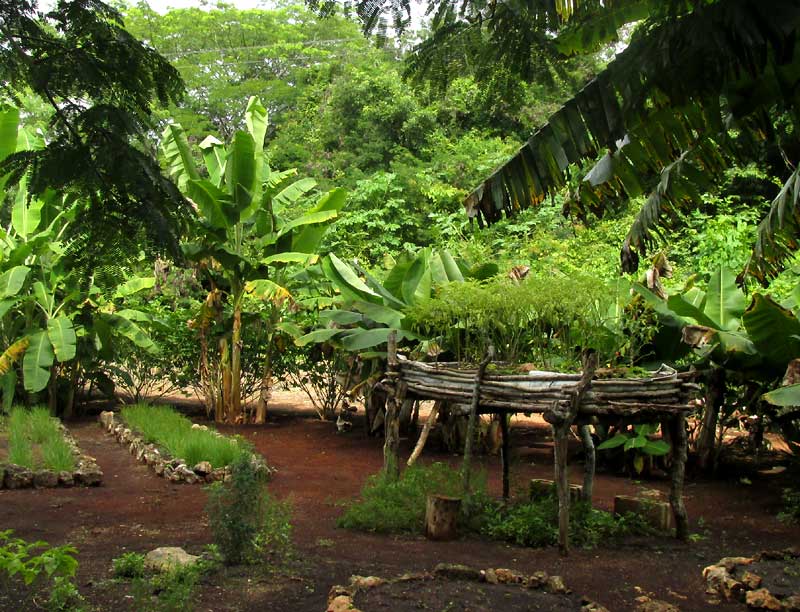
The elevated structure at the right in that picture is a kanché, a Maya way of getting important plants away from hungry iguanas, and where leafcutter ants are less likely to invade. The rock-framed gardens at the left are Maya eras, in which healthy crops of chives, or cebollín, are growing. In one such era, I've sown some mustard greens and collards.
Though the seeds I've planted are a year old, carried down from Texas, and were one of those 10¢/pkg deals, I have high hopes for them. Also I'm hoping that friends from up North might bring other seeds of greens, herbs and ornamental flowers.